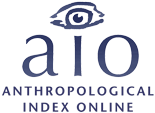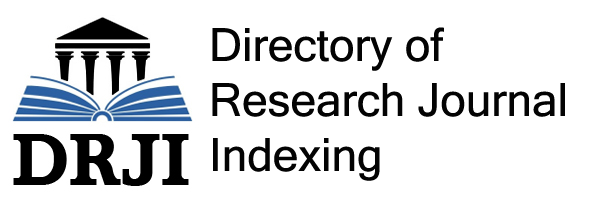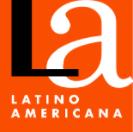Homo clonicus: New techniques, old ideas of engendering humans
Keywords:
cloning, biotechnology, anthropology, kinshipAbstract
This article analyzes the advances in biomedicine, in particular, the case of the cloning of cells and mammalians, pointing out the significant interactions between biotechnological procedures in the laboratory and human socio-cultural needs, hopes and desires. Key topics for anthropology such as kinship, the racial issue, eugenics, nature/culture opposition, sexism, among others, pose new questions in light of the possibilities opened by the cloning procedure, but also -at least- one answer: Nature is not a fixed thing.
References
Baylis, Françoise (2009). “For love or money? The saga of Korean women who provided eggs for embryonic stem cell research”, Theorethical Medicine and Bioeticsh, Vol. 30, Nº 5, pp. 385-396.
Benito, Emilio de (2008). “Reino Unido autoriza embriones híbridos a partir de humano y animal. Las células madre permitirán impulsar un nuevo adelanto científico sin usar óvulos femeninos”, El Pais, 18 de enero.
Benito, Emilio de (2013). “Nunca nos planteamos crear humanos”, El País, 20 de mayo.
Balcells Gorina, Alfonso (1980). “La inseminación artificial. Zootecnia en el hombre”, La Vanguardia, 3 de mayo.
Bryan, Edward M. (1998). “A spare or an individual? Cloning and the implications of monozygotic twinning”, Human Reproduction Update, Vol. 4, Nº 6, pp. 812-815.
Darnovsky, Marcy y Galpern, Emily (2005). “Eggs vs. Ethics in Stem cell Debate”, The Nation, 29 de noviembre.
Descola, Philippe (2012). Más allá de naturaleza y cultura. Buenos Aires, Amorrortu editores.
Descola, Philippe y Palsson, Gisli (1996). Nature and Society: Anthropological Perspectives. London, Routledge.
El país (2007). “Reino Unido permite los embriones híbridos de animal y humano”, 5 de septiembre.
El Roto (2007). “¡No nos toqueis los óvulos!”, El País, 12 de julio.
Freundlich, Naomi (1997). “The Biotech Century. Special Report”, Business Week, 10 de marzo, pp. 78-92.
Fonseca, Claudia (2006). “Paternidade brasileira na era do DNA: a certeza que pariu a dúvida”, Cuadernos de Antropología Social, Nº 22, pp. 27-54.
Galton, Francis (1874). “On men of science, their nature and their nurture”, Proceedings of the Royal Institution of Great Britain, Vol. 7, pp. 227-236, Hilts 399.
Heisenberg, Werner (1958). Physics and Philosophy: The Revolution in Modern Science. London, Penguin Books.
Jacob, François (1973). The Logic of Life: A History of Heredity. New York, Pantheon Books.
Jha, Alok (2008). “First British human-animal hybrid embryos created by scientists”, The Guardian, 2 de enero.
Kahn, Axel (1997). “Clone Mammals-Clone Man?”, Nature, Nº 385, pp. 1-4.
Keller, Evelyn Fox (1987). “The Gender/Science System: Or, Is Sex to Gender as Nature Is to Science?”, Hypatia, Vol. 2, Nº 3, pp. 37-49.
Keller, Evelyn Fox (1992). “Nature, Nurture, and the Human Genome Project”, en Kevles, Daniel J. y Hood, Leroy (ed.), Scientific and Social Issues in the Human Genome Project. Cambridge, Cambridge University Press.
Kolata, Gina (1999). Clone: The Road to Dolly and the Path Ahead. New York, Quill.
Lock, Margaret y Nguyen, Vinh-Kim (2010). An Anthropology of Biomedicine. Oxford, Wiley-Blackwell.
Mario, Christopher (1997). “A Spark of Science, A Storm of Controversy”, US 1 Newspaper, 5 de marzo, pp. 1-6.
Nussbaum, Martha C. y Sustein, Cass R. (ed) (1998). Clones and Clones. Facts and Fantasies about Human Cloning. New York y London, W.W. Norton & Company.
Pico della Mirandola, Giovanni (2002) [1463-1494]. Discurso u oración sobre la dignidad del hombre. Barcelona, PPU.
Rattray Taylor, Gordon (1968). The Biological Time-Bomb, Londres, Thames and Hudson.
Rius, Mayte (2018). “Entre la frivolidad y la inmoralidad. Lo clonación de mascotas suscita rechazo entre académicos y defensores de los derechos de los animales”, La Vanguardia, 17 de marzo, pp. 24-25.
Rubin, Gayle (1986) [1975]. “El tráfico de mujeres: notas sobre la ‘economía política’ del sexo”, Nueva Antropología, Vol. 8, N.º 30, pp. 95-145. Título original: “The Traffic in Women: Notes on the ‘Political Economy’ of sex”.
Silver, Lee M. (1997). Vuelta al Eden. Más allá de la clonación en un mundo feliz.Madrid, Taurus.
Spiewak, Martin (2010). “Verbotene Kinder. Leihmutterschaft”, Die Zeit, 22 de abril, pp. 4-5.
Wellcome Trust (1998). Public Perspectives on Human Cloning. A Social Re-search Study. Londres, The Wellcome Trust.
Tesarik, Jan (2002). “Reproductive semicloning respecting biparental embryo origin. Embryos from syngamy between a gamete and a haploidized somatic cell”, Human Reproduction, Vol. 17, Nº 8, agosto de 2002, pp. 1933-1937.
Venter, John Craig y Cohen, Daniel (1997). “A las puertas del siglo de la biología”, El País, 18 junio.
Watson, James D. (1971). “Moving Toward the Clonal Man: Is this what we want”, The Atlantic Monthly, Nº 227, pp. 50-53.
























